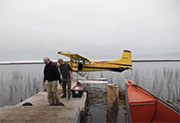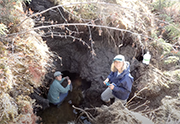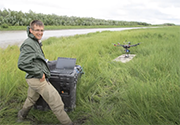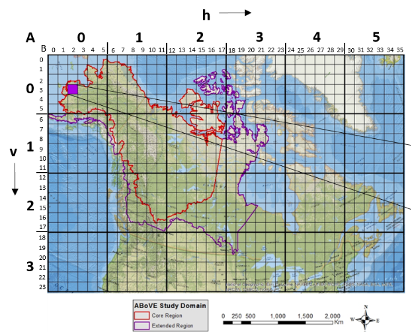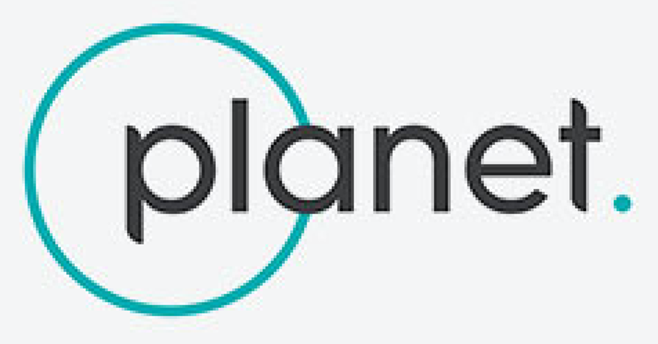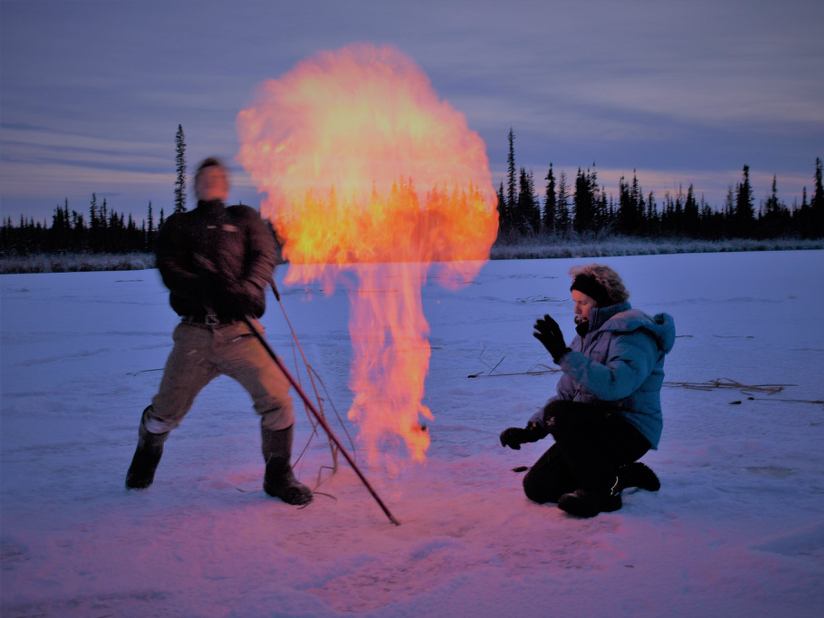6th ABoVE Science Team Meeting Summary:
The 6th meeting of the ABoVE Science Team was held virtually from June 1st-4th 2020. The meeting was originally slated to take place in Fairbanks, Alaska the week of May 11th, 2020. However, due to COVID-19 travel restrictions, the meeting was reconfigured into a virtual format. In an attempt to accommodate the growing demands on science team members' time during this new telework environment (e.g., on-line teaching, child care, home schooling, etc.), the meeting was moved to take place after the spring semester had concluded at most academic institutions. In addition, the meeting was structured into two 1.5 hour blocks of presentations each day separated by a one hour break, which allowed participants to take a break and care of personal business as needed.
The meeting was held over WebEx. The virtual environment allowed significantly more participation than previous ABoVE Science Team meetings because there were no physical space constraints. Indeed, although participation was variable, it remained high throughout each day of the meeting, with the number of participants logged into the meeting averaging around 140 each day, with the maximum nearing 190 people. Attendees included individuals from NASA and other US federal agencies, Alaska, and a variety of Canadian territorial and federal agencies. There were also many people from US, Canadian, and European universities. The goal was to collectively assess the latest in ABoVE science via a series of talks by science team members, partner presentations, as well as virtual posters and breakout sessions. Many of the 100 virtual poster presentations were led by students and postdocs. The virtual poster session was well received by all participants and allows for long term availability of all the posters through the AGU archive, another of the positive benefits of having a virtual meeting. The posters can be viewed in this on-line iPoster gallery and recordings from the plenary presentations are now available on the agenda.
Results from the 68 NASA-funded projects as well as 23 affiliated projects were discussed via the invited plenary and partner presentations as well as during the iPoster session. In addition, the 19 ABoVE Phase-2 PIs gave brief status updates on their projects, with particular attention given to the impacts the COVID-19 related delays in the airborne campaign and field season are having on currently funded projects. There were also brief reports on synthesis activities from the various ABoVE Science Team working groups. These included presentations on cross cutting activities related to Arctic vegetation dynamics, gaps in our understanding of the role snow plays in Arctic and boreal ecosystems, fire and insect disturbance, ecosystem structure, carbon cycle dynamics and integrated ecosystem modeling, among others. These synthesis activities have already resulted in several publications in high profile journals, with many more publications planned. Partner presentations nicely demonstrated the engagement of multiple US, federal, and international partners by providing overviews of existing and potential synergies with programs like NGEE-Arctic and NEON, as well as with agencies such as POLAR Canada, the Canadian Forest Service, and the Yukon and Northwest Territories. All presentations can be downloaded from the online meeting agenda (no login required). Indeed, it was clear that ABoVE continues to be innovative, productive and impactful, with >233 publications, several of which are in top tier journals such as Nature, Science, and PNAS. ABoVE also continues to broaden its impact via increased sharing of datasets through the Oak Ridge National Laboratory Distributed Active Archive Center (ORNL DAAC).
Finally, we sincerely thank all of those who participated in the meeting, and especially the members of the organizing committee whose efforts led to an extremely productive and rewarding meeting. We very much look forward to seeing all of you in Fairbanks in 2021 for the 7th ABoVE Science Team Meeting!

Virtual Happy Hour |
ABoVE Code of Conduct and Land Acknowledgement
1. Code of Conduct
ABoVE leadership and the staff of the Carbon Cycle & Ecosystems Office are committed to providing safe, welcoming, and productive environments in the field and the lab, and at meetings and conferences, and have adopted the American Geophysical Union Scientific Code of Conduct. The Code of Conduct “rejects discrimination and harassment by any means, based on factors such as ethnic or national origin, race, religion, citizenship, language, political or other opinion, sex, gender identity, sexual orientation, disability, physical appearance, age, or economic class.” This Code also includes information on expected behavior, unacceptable behavior, and consequences. If you have any concerns or need an ally contact: Peter Griffith, Libby Larson, Liz Hoy, Leanne Kendig, Sarah Sackett, or Mike Falkowski. To formally file a complaint with NASA, consult Harassment and Discrimination Reporting for NASA Employees, Contractors and Grantee Beneficiaries.
2. Land Acknowledgment
We would like to acknowledge that the circumpolar Arctic is the home to many different Indigenous Peoples. We are reminded of their deep connection to this region, and our role as researchers to work towards reconciliation with our Indigenous partners. Wherever you may be reading this newsletter, please join us in honoring the place-based knowledge of Indigenous Peoples and recognizing their ancestral and contemporary stewardship of their homelands.
|


